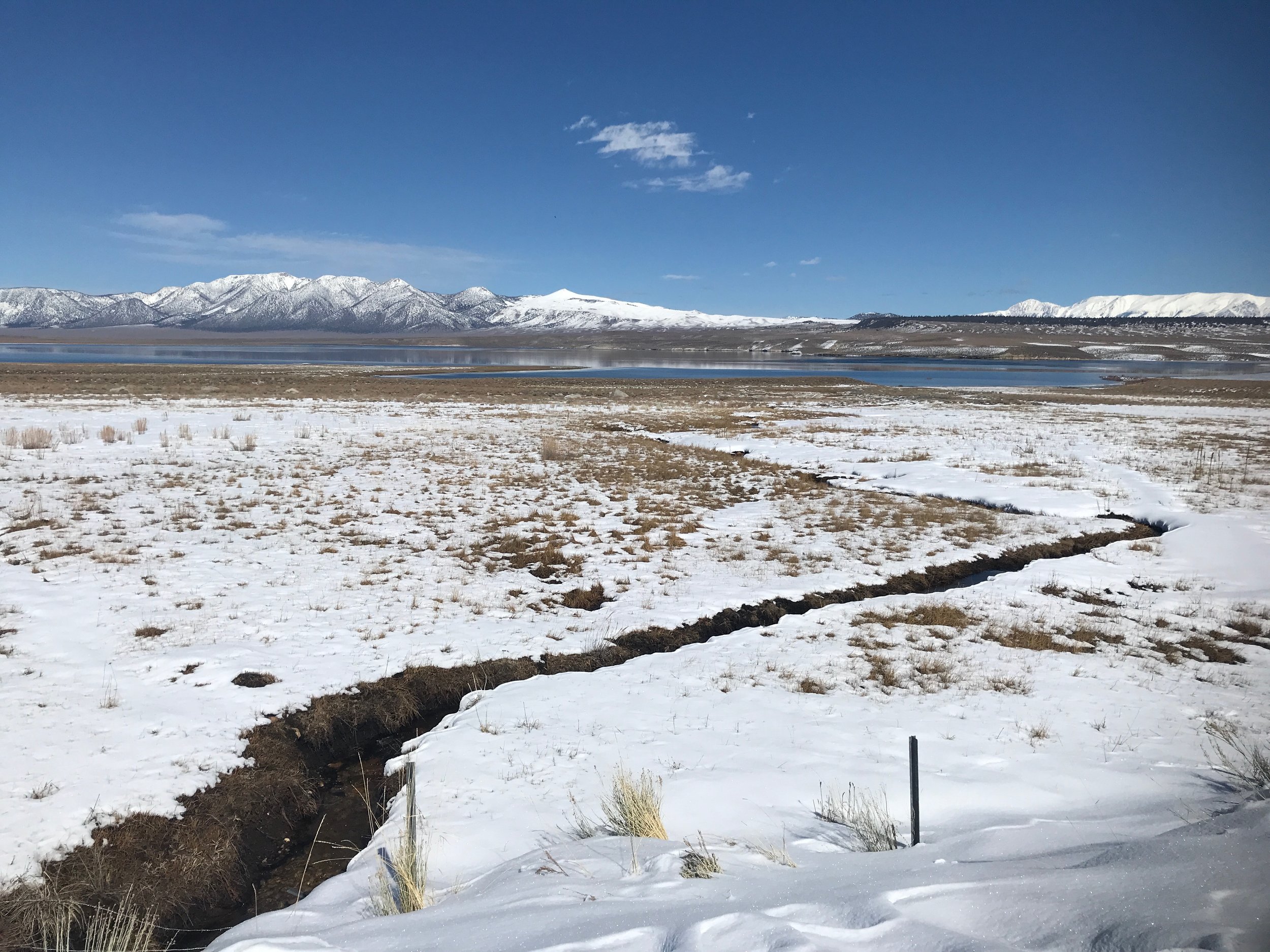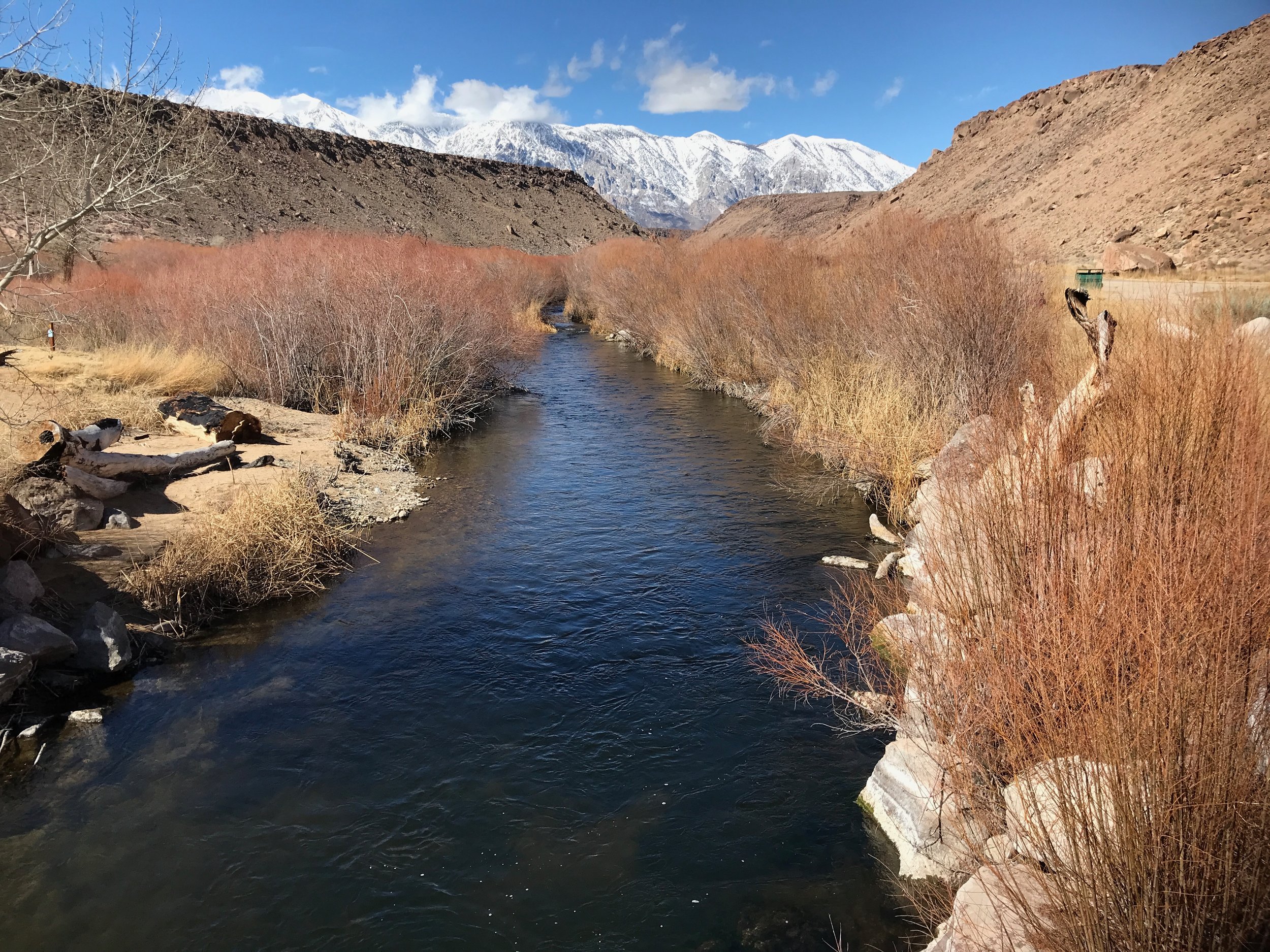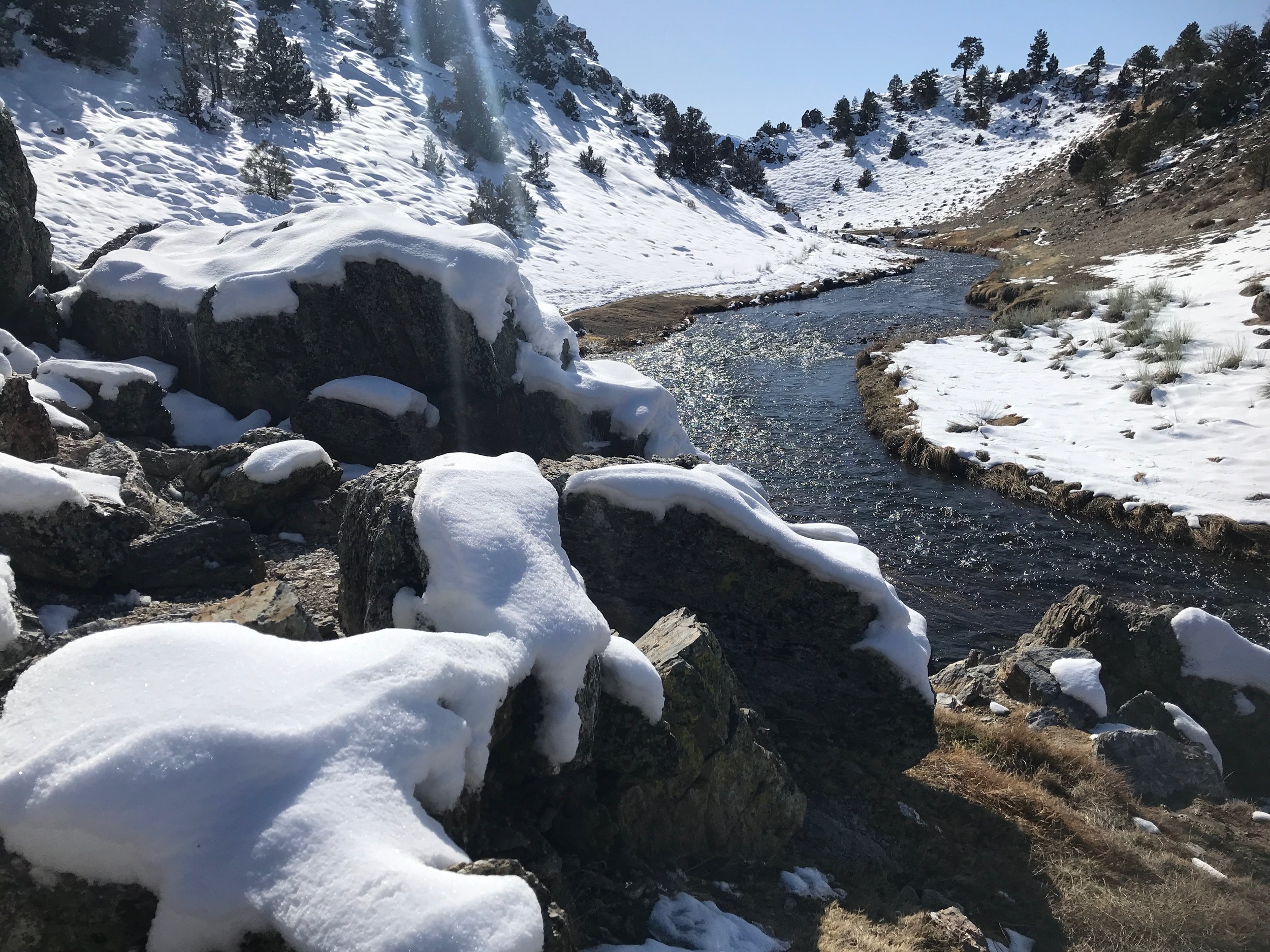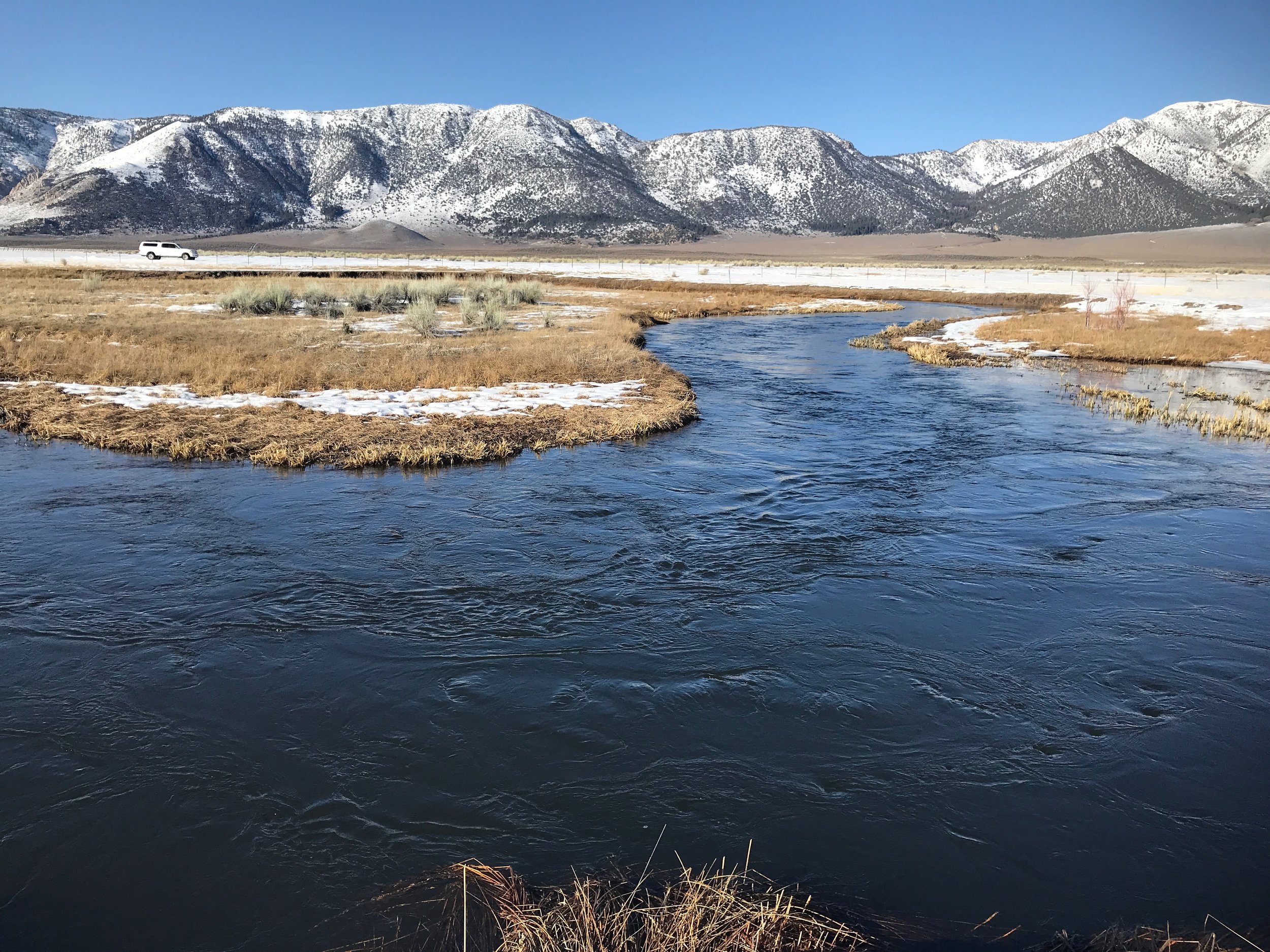Warm days are in the future for Eastern Sierra fly fishers as storms have moved out of the Eastern Sierra. If you are looking to fly fish the waters of the Eastern Sierra now is the time. The snow starts at the top of Sherwin Grade. Dirt roads are accessible with four wheel drives and high clearance vehicles. There is four to 12 inches of snow on the roads out to upper elevation waters. Hatches of midges, mayflies and caddis flies are keeping the trout active. As the hatches intensifies the surface feeding trout will increase. Nymphing with an indicator or with a Euro rig is still the most consistent way to catch trout.
Crowley Lake has not frozen over this year and the snow around the lake will not last long.
Lower Owens River
Wild Trout Section:
Midges, mayflies and caddis flies have the trout feeding on nymphs and coming to surface to feed on the hatching insects. Mid-day mayfly hatches are keeping the trout active as they feed on the nymphs and the hatching adults. On the surface fish with blue wing olive parachutes, Adams parachutes and olive sparkle duns in size 16 and 18. Under the surface fish with bead head flash back pheasant tail nymphs in size 18, hot spot pheasant tail nymphs in size 16 and olive quilldigons in size 16 or 18. Midge have been sporadic on the water and the trout have not keyed in on them yet. I carry size 18 and 20 Griffith’s gnats for when the trout key in on the ovipositing midges. Caddis are just starting to hatch. Carry size 18 or 20 elk air caddis, spent partridge caddis and X-caddis for when the trout key into the hatching caddis.
Fresh snow on the Sierra, warm days, low flows and blue wing olive mayfly hatches makes the lower Owens River the best fly fishing spot this week.
Hot Creek
Interpretive Site:
There is enough snow on the road into the Interpretive Site that no one has laid first tracks on the road into the interpretive site. Fly fishers are parking on Hot Creek Hatchery Road and walking into the creek. Mayflies, caddis pupae and midges are the insects that the Hot Creek trout are feeding on. There are a few trout rising, but the bulk of the trout are feeding on nymphs. Size 16 and 18 olive quilldigons, size 16 hot spot pheasant tail nymphs, size 18 bead head flash back pheasant tail nymphs and size 16 or 18 Frenchie’s are the fly patterns that are fooling the mayfly nymph feeding trout.
Fly fishers need to be careful walking around Hot Creek in the canyon as there is mud, snow and ice making it slippery.
Hot Creek
Canyon Section:
Fly fishers are driving into Hot Creek canyon parking areas with four wheel drive high clearance vehicles. There is four inches to a foot of snow on the ground in Hot Creek Canyon. There is lots of slippery mud right next to the creek that felt soled wading boots love to slip on. The trout are feeding on caddis, mayflies and midges. Nymphing with an indicator, fishing with a dry and dropper or a Euro rig to present the nymphs to the trout is the way to successfully fly fish Hot Creek Canyon. Work the flies in the deeper holes or runs between the weed beds. The best fly patterns are burlap caddis in size 14, olive quilldigons in sizes 16 and 18. Frenchie’s in size 16 and 18, hot spot pheasant tail nymphs in size 16, bead head flash back pheasant tail nymphs in size 18 and cream caddis in size 18.
The upper Owens River is flowing high at 90 CFS and is off color from the melting snow.
Upper Owens River
Above Benton Crossing Bridge:
The main dirt road into the upper Owens River above Benton Crossing Bridge is muddy, has lots of puddles, but is drivable. Once you get onto the spur roads out to the river you will encounter snow and will need a four wheel drive vehicle with clearance. The river is flowing at 90 CFS and is off color from the melting snow that is running off the meadow into the river. The trout are in the river, but require lots of effort to catch them. Working the water thoroughly with lots of casts and enough weight to get the flies to bounce of the bottom is what is going to get the fly fisher that once in a life time trophy trout. Bigger flies or bright colored flies is doing the trick right now. Fish with size 12 stoner nymphs, size 12 green/gold Prince nymphs, size 12 Richard’s hare’s ear variant, size 12 rainbow warrior, size 12 squirmy wormies, size 12 red San Juan worms and size 12 egg patterns.
Low water and spooky trout is making fly fishing in Bishop Creek Canal tough.
Bishop Creek Canal
Behind the Old Ford Dealer:
The storms that hit the Eastern Sierra have left mud puddles on the dirt road that parallels the canal. There are trout in Bishop Creek canal which you can see spook as you walk along the edge of the canal. Low clear water is making casting to the trout almost impossible. Until the water flows increase fly fishing in the canal will be tough.





